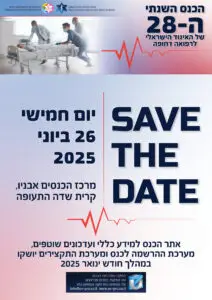פוסט זה זמין גם ב:
עברית
 Chantal D Tan ,1 Clementien L Vermont,2 Joany M Zachariasse,1 Ulrich von Both ,3 Enitan D Carrol,4,5 Irini Eleftheriou,6 Marieke Emonts,7,8 Michiel van der Flier,9,10 Jethro Herberg,11 Benno Kohlmaier,12 Michael Levin,13 Emma Lim ,7 Ian K Maconochie,14 Federico Martinon- Torres,15 Ruud G Nijman ,11,14 Marko Pokorn,16 Irene Rivero- Calle,15 Aleksandra Rudzāte,17 Maria Tsolia,6 Werner Zenz,12 Dace Zavadska,17 Henriette A Moll,18 On behalf of PERFORM consortium (Personalised Risk assessment in febrile children to optimise Real- life Management across the European Union)
Chantal D Tan ,1 Clementien L Vermont,2 Joany M Zachariasse,1 Ulrich von Both ,3 Enitan D Carrol,4,5 Irini Eleftheriou,6 Marieke Emonts,7,8 Michiel van der Flier,9,10 Jethro Herberg,11 Benno Kohlmaier,12 Michael Levin,13 Emma Lim ,7 Ian K Maconochie,14 Federico Martinon- Torres,15 Ruud G Nijman ,11,14 Marko Pokorn,16 Irene Rivero- Calle,15 Aleksandra Rudzāte,17 Maria Tsolia,6 Werner Zenz,12 Dace Zavadska,17 Henriette A Moll,18 On behalf of PERFORM consortium (Personalised Risk assessment in febrile children to optimise Real- life Management across the European Union)Abstract 
Background The number of paediatric patients visiting the ED with non-urgent problems is increasing, leading to poor patient flow and ED crowding. Fast track aims to improve the efficiency of evaluation and discharge of low acuity patients. We aimed to identify which febrile children are suitable for a fast track based on presenting symptoms and management.
Methods This study is part of the Management and Outcome of Fever in children in Europe study, which is an observational study including routine data of febrile children <18 years attending 12 European EDs. We included febrile, low urgent children (those assigned a triage acuity of either ‘standard’ or ‘non-urgent’ using the Manchester Triage System) and defined children as suitable for fast track when they have minimal resource use and are discharged home. Presenting symptoms consisted of neurological (n=237), respiratory (n=8476), gastrointestinal (n=1953) and others (n=3473, reference group). Multivariable logistic regression analyses regarding presenting symptoms and management (laboratory blood testing, imaging and admission) were performed with adjustment for covariates: patient characteristics, referral status, previous medical care, previous antibiotic use, visiting hours and ED setting.
Results We included 14 139 children with a median age of 2.7 years (IQR 1.3–5.2). The majority had respiratory symptoms (60%), viral infections (50%) and consisted of self-referrals (69%). The neurological group received imaging more often (adjusted OR (aOR) 1.8, 95% CI 1.1 to 2.9) and were admitted more frequently (aOR 1.9, 95% CI 1.4 to 2.7). The respiratory group had fewer laboratory blood tests performed (aOR 0.6, 95% CI 0.5 to 0.7), were less frequently admitted (aOR 0.6, 95% CI 0.5 to 0.7), but received imaging more often (aOR 1.8, 95% CI 1.6 to 2.0). Lastly, the gastrointestinal group had more laboratory blood tests performed (aOR 1.2. 95% CI 1.1 to 1.4) and were admitted more frequently (aOR 1.4, 95% CI 1.2 to 1.6).
Conclusion We determined that febrile children triaged as low urgent with respiratory symptoms were most suitable for a fast track. This study provides evidence for which children could be triaged to a fast track, potentially improving overall patient flow at the ED.








